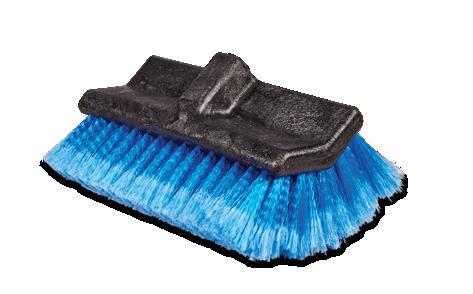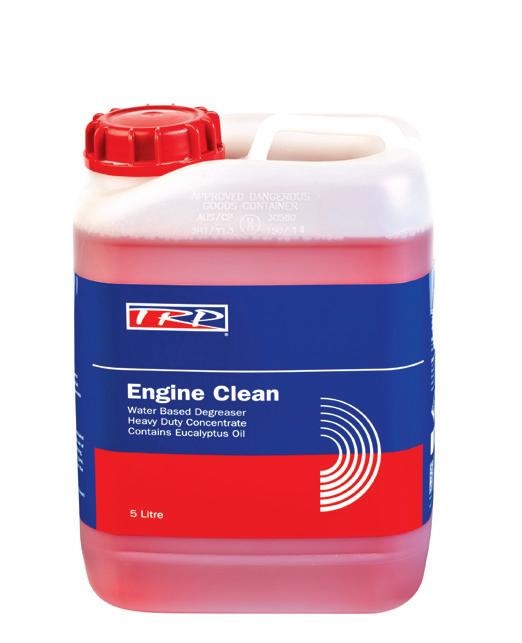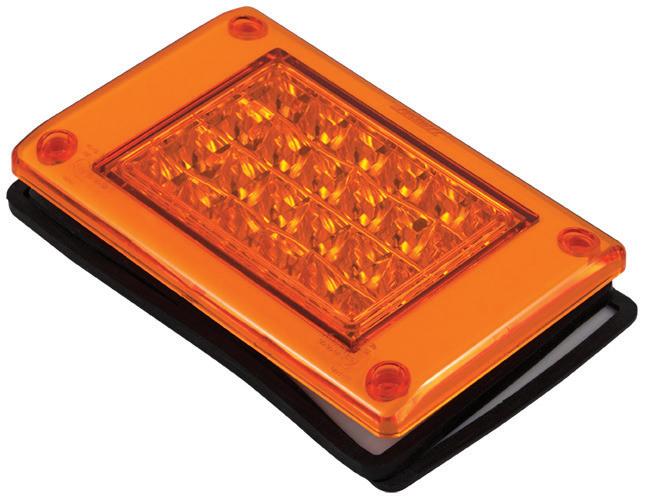
4 minute read
Tireless safety campaigner wishes he could do more
From page 14
THERE has been plenty of wins along the way for Hannifey. He’s won Driver of the Year accolades from the Australian Trucking Association and NatRoad, and arguably done more to improve the caravanners’ understanding of how to share the roads more safely with truckies than anyone else in the road transport industry.
He’s won several safety awards, fronted dozens of video campaigns, and is also proud of the in-roads he’s made with his ever-expanding network of green reflectors, which count down the
Truckies’ On Road Code, by
1. Respect, assist and treat other truckies as you would like to be treated.
2. Make allowances for car drivers. They don’t drive or understand trucks.
3. Your behaviour on the road and to other motorists is how we are all seen. Try to be courteous and show a good face to represent the industry that feeds you and your family.
4. Do not tailgate. Cars – you are seen as pushy cowboys, particularly where there is no safe place to pass for some time. It’s one of our two biggest public issues. Trucks – help one another, use CB and or flash highbeam when overtaking. Be and be seen to be, working together as those who spend their life on the road.
5. Blatant speeding is the other biggest issue that the public abhor and use to beat us up in the press, and brand us all as irresponsible cowboys.
6. Jake brakes – in hours of darkness turn off at 60 signs and back on at 100 and only use when absolutely necessary in these urban areas at night.
7. Appearance – make an effort to look and act as a professional truck driver. Even if you do not like this term, there’s more chance you’ll be treated better if you make an effort to look and act the part. distance to informal parking bays along the highways.
8. Bad language – on CB, particularly UHF with rural community use and longer range. You are not in a closed room. You don’t speak in front of your family like that, don’t do it in case of others who may be listening.
9. Dip your lights first at night. Show a good example for truckies and others.
10. Safe equipment and safe operation will see you home safe as well. Whilst any effort to educate the average car driver will take many years, we can only do our best to travel in safety on the road. Your best efforts may often be overshadowed by bad press from an incident or accident involving a truck and often wrongly blamed upon the truckie, but only with time and education will the public, both motoring and general, come to appreciate the enormous contribution that the road transport industry makes to their comforts and way of life. Your efforts and time on the road will either assist or destroy the attempts being made by many to improve how we are seen and treated, both on the road and off. It is a hard life on families and not respected for the money in equipment and cargo carried, or lifestyle involved.
Every month he fields a call from a driver telling him that the simple but effective idea has saved their life, which only adds to the frustration over the resistance he still strikes from some local and state bodies in adopting the concept.

Even so, Hannifey is arguably the most well-known, and influential truckie in the industry today with a profile that stretches from the remotest roadhouses to the highest echelons of power in Canberra. There wouldn’t be a boss in any of the state or territory transport agencies who hadn’t fielded a call from him about the woeful state of their roads, or a rest area that needs fixing.
In the week that he speaks to Big Rigs for this cover story, the tireless Hannifey has already spoken to the HVNL steering committee, the NHVR about the future of the industry and helmed a board meeting of the National Road Freighters Association in his role as president.

He’s also hosted his weekly spot on a national radio show, and done more media interviews about his new role as a counsellor for The Open Road, Open Up initiative which uses the UHF CB Channel 24 as a free support platform.
“I get really frustrated that I can’t do more, that I can’t fix the rest area problem overnight and we can’t have perfect roads everywhere around Australia,” says Hannifey, who is also a member of the first industry-led rest area steering committee.
“Our roads aren’t as safe as they could be. I came home from Townsville two weeks ago and I was only in a B-double at the time on a section of that Gregory Development Road and a truck coming the other way was an inch too far my way and I moved over and I scared myself simply because I moved one inch to the left.
“When I got further down the road a bloke said to me there’s been quite a few dog trailers go over there because once you move over, it just grabs the trailer and pulls you off the road because there’s no shoulder. Our people die because the roads are not up to a standard. We don’t have a national road standard.”
Faced with so much red tape and obfuscation from can-kicking bureaucrats, most would just wave the white flag, pivot into another industry, or quietly fade into retirement.
But not Hannifey. He’s already committed to another four years navigating those all-too hazardous highways with the new trailers in tow behind his beloved TIV.
So, what drives him to keep going in the face of so many knockbacks and roadblocks, when he’s already done so much?
“Yes, the family suffers, it does. Yes, it puts you in a position at times where you think, is it really worth it?
“But when I started this, there was one basis, and that basis was, if I get one bit of road fixed, if I get one rest area built or improved, if I prevent one crash, or one fatality, then everything after that’s a bonus, and that’s the system I worked on since then.
“Sometimes people are critical and give you a hard time because you’ve got a nice truck or because you talk on the radio, and I understand their frustration and cynicism, I really do.
“But you either try and act positive and do something positive for change, or you sit there and whinge, and I’m afraid whinging doesn’t fix much.”




























